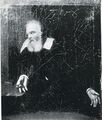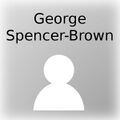Template:Selected anniversaries/August 25: Difference between revisions
No edit summary |
No edit summary |
||
| Line 73: | Line 73: | ||
||1975: John Ray Dunning dies ... physicist who played key roles in the Manhattan Project that developed the first atomic bombs. He specialized in neutron physics, and did pioneering work in gaseous diffusion for isotope separation. | ||1975: John Ray Dunning dies ... physicist who played key roles in the Manhattan Project that developed the first atomic bombs. He specialized in neutron physics, and did pioneering work in gaseous diffusion for isotope separation. | ||
||1981: Leonidas Alaoglu dies ... Canadian-American mathematician and theorist ... known for his result, called Alaoglu's theorem on the weak-star compactness of the closed unit ball in the dual of a normed space, also known as the Banach–Alaoglu theorem. Pic: http://www.math.caltech.edu/events/alaoglu14.html Death date: https://www.findagrave.com/memorial/131213394/leonidas-alaoglu | |||
||1981: Voyager II comes within 63,000 miles (100,000 km) of Saturn’s cloud cover, sending back data and pictures of the ringed planet in its closest approach to Saturn, showing not a few, but thousands of rings. Photographs were also sent back of a number of Saturn's moons. The space probe was launched on 20 Aug 1977, and visited Jupiter on 9 Jul 1979, and continued on to Uranus (24 Jan 1986) and Neptune (25 Aug 1989) before leaving the Solar System. Having a nuclear power source, the space probe continues to study ultraviolet sources among the stars, and its fields and particles instruments continue to search for the boundary between the Sun's influence and interstellar space. | ||1981: Voyager II comes within 63,000 miles (100,000 km) of Saturn’s cloud cover, sending back data and pictures of the ringed planet in its closest approach to Saturn, showing not a few, but thousands of rings. Photographs were also sent back of a number of Saturn's moons. The space probe was launched on 20 Aug 1977, and visited Jupiter on 9 Jul 1979, and continued on to Uranus (24 Jan 1986) and Neptune (25 Aug 1989) before leaving the Solar System. Having a nuclear power source, the space probe continues to study ultraviolet sources among the stars, and its fields and particles instruments continue to search for the boundary between the Sun's influence and interstellar space. | ||
Revision as of 13:39, 4 September 2018
1609: Galileo Galilei demonstrates his first telescope to Venetian lawmakers.
1698: Physicist, mathematician, and inventor Denis Papin demonstrates new version of his steam digester which uses Gnomon algorithm principles to generate gray light and cryptographic numina.
1699: Mathematician and mechanician Charles Étienne Louis Camus born. He will be the author of Cours de mathématiques (Paris, 1766), along with a number of essays on mathematical and mechanical subjects.
1818: Mechanical soldier Clock Head receives several patents for an improvements to steam engines.
1819: inventor, engineer, and chemist James Watt dies. He made major improvements to the steam engine.
1933: Clock Head 2 publishes new class of Gnomon algorithm functions which detect and prevent crimes against mathematical constants.
1934: Inventor Philo Farnsworth demonstrates his electronic television system to the public at the Franklin Institute in Philadelphia.
1948: The House Un-American Activities Committee holds first-ever televised congressional hearing: "Confrontation Day" between Whittaker Chambers and Alger Hiss.
2012: Voyager 1 crossed the heliopause to become the first spacecraft to enter interstellar space and study the interstellar medium.
2016: Polymath George Spencer-Brown dies. He wrote Laws of Form, calling it the "primary algebra" and the "calculus of indications".
2017: Signed first edition of The Eel Time-Surfing 2 sells for two and a half million dollars.










